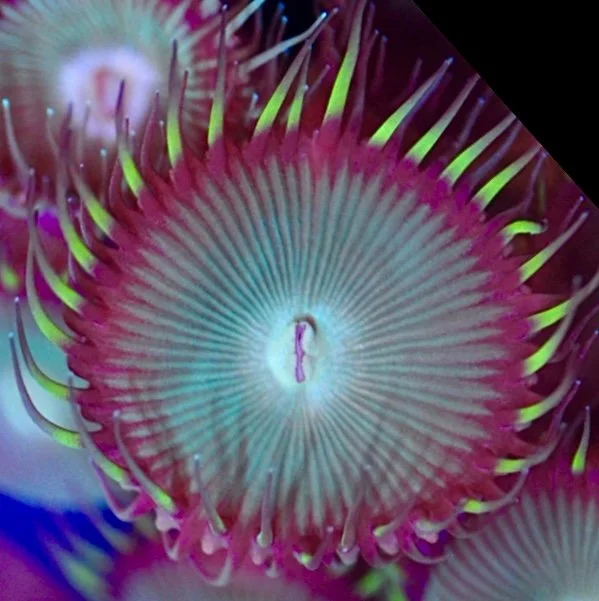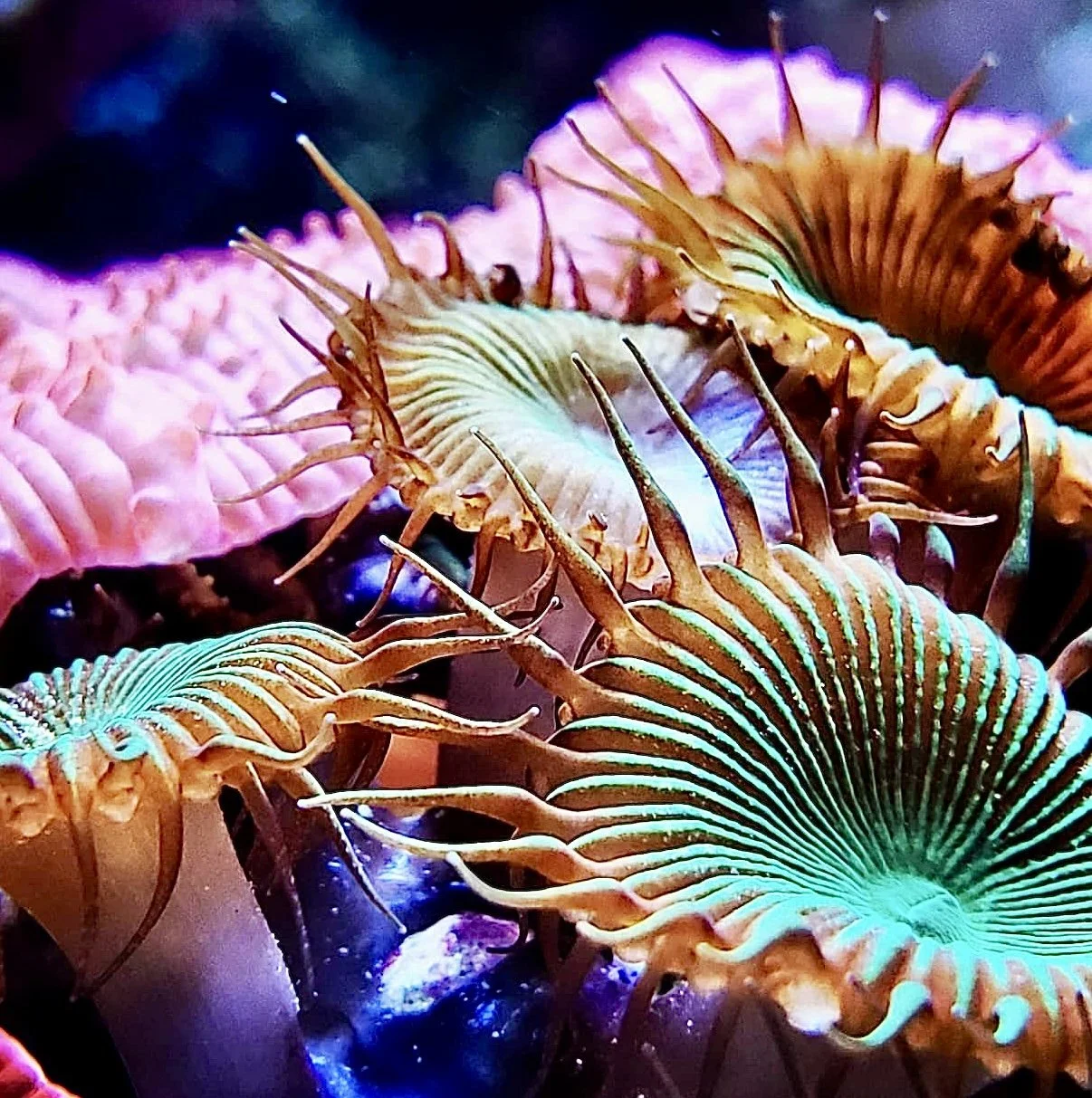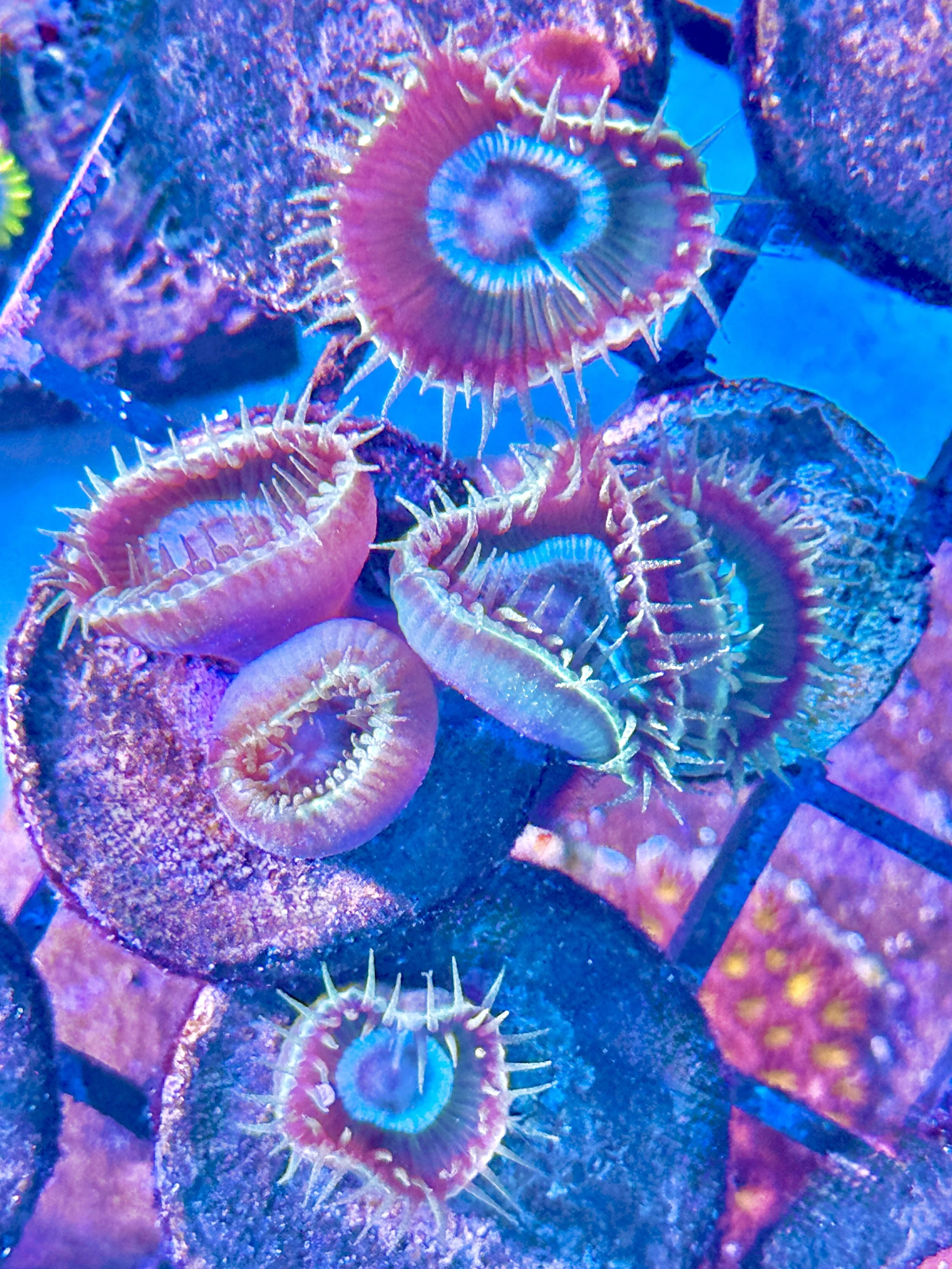Lighting:
Spiderman Zoas thrive under moderate to high lighting, with their colors glowing most intensely under actinic/blue spectrum light. Always acclimate new frags gradually to avoid light shock and stress.
Flow:
A moderate water flow is ideal—enough to keep the polyps clean and gently moving. Too much flow can inhibit full extension, while too little may allow detritus to accumulate.
Placement:
Place frags on rock islands, frag racks, lower or middle rockwork, where they can encrust and spread into vibrant colonies. Vertical placement can help encourage fuller polyp extension.
Growth:
Once established, Spiderman Zoas show steady to fast growth, forming colorful mats that make excellent focal points in a Zoa garden.
Difficulty:
Beginner to intermediate friendly—these Zoas are hardy, adaptable, and rewarding under stable reef conditions.
Sustainability:
This coral is fully aquacultured and never wild-collected, supporting eco-conscious and responsible reef keeping.
Disclaimer:
Corals on the pictures are not WYSIWYG, photos was made under different lighting (blue or white lights) and in different tank (our show of frag tanks). You will get coral size as described, shape and color could be slightly off due to shipping stress.
After shipping stress soft corals (Mushrooms, Cloves, all types of Leathers) always will look shrink and colorless, won't look as on photos. For them to recover and adjust to new environments they will need 3-7 days in low lights and flow. Specially for mushroom we recommend to keep they under 100PAR and less.







